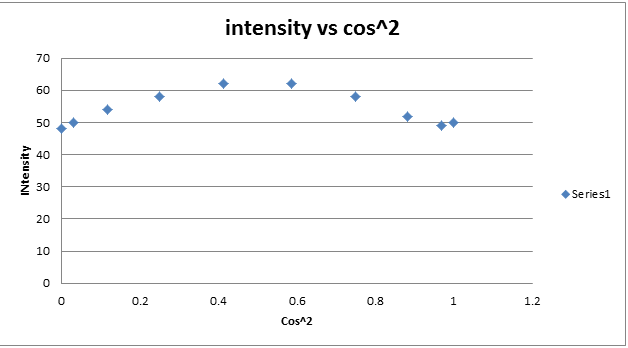PROCEDURE:
 |
| red LED across voltage in series |
 |
| View through slit |
 |
| View through slit of white light. |
Measurement of Voltage
and Distance (D) of spectra
|
||||||||
LED
|
Red
|
Blue
|
Green
|
Yellow
|
||||
Voltage (V)
|
1.884 ± .01
|
2.711 ± .01
|
2.825 ± .01
|
1.924 ± .01
|
||||
Trial 1 (cm)
|
67.25
|
61.2
|
69.2
|
44.75
|
66.0
|
50.0
|
65.5
|
55.5
|
Trial 2 (cm)
|
69.9
|
61
|
57.5
|
44.75
|
64.0
|
51.8
|
65.0
|
54.5
|
Trial 3 (cm)
|
68.0
|
60.0
|
57.8
|
46.0
|
63.0
|
50.25
|
63.8
|
54.5
|
CONCLUSION: There were many steps taken to find and verify planks constant. Using a number of different LED lights, the wavelength was determined by finding the distance of the spectra and using the law of similar triangles. The voltage was also determined which would be used along with the known charge of an electron to find the energy, E of the system. Using the value of E and the calculated wavelength of each light, planks constant was able to be determined. The slope of E and c/λ, the value would give the value of the planks constant from the values of LED lights. However, the given value as shown gives a high error value.
Planks constant is known to be 6.626E-34, and the slope value had given a value on the order of 10^-33. Because of this error, the experiment then relied on the theoretical approach of calculating the h value of each LED and finding the average value. This had given a value of 10^-34 and more specifically an error with 15% which is an accepted value. Based on these values planks constant is verified based on these results.



















































